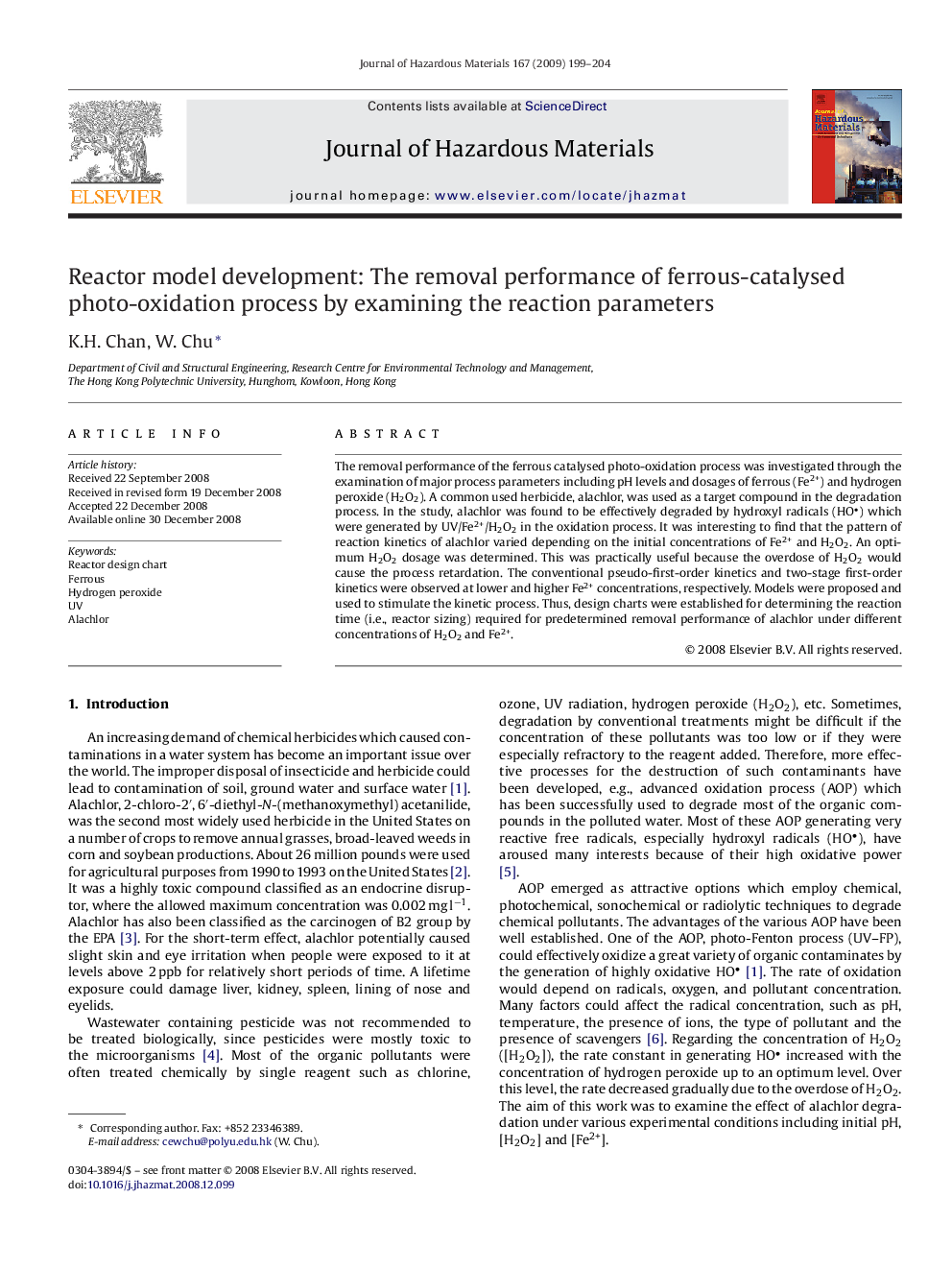| Article ID | Journal | Published Year | Pages | File Type |
|---|---|---|---|---|
| 581767 | Journal of Hazardous Materials | 2009 | 6 Pages |
Abstract
The removal performance of the ferrous catalysed photo-oxidation process was investigated through the examination of major process parameters including pH levels and dosages of ferrous (Fe2+) and hydrogen peroxide (H2O2). A common used herbicide, alachlor, was used as a target compound in the degradation process. In the study, alachlor was found to be effectively degraded by hydroxyl radicals (HO) which were generated by UV/Fe2+/H2O2 in the oxidation process. It was interesting to find that the pattern of reaction kinetics of alachlor varied depending on the initial concentrations of Fe2+ and H2O2. An optimum H2O2 dosage was determined. This was practically useful because the overdose of H2O2 would cause the process retardation. The conventional pseudo-first-order kinetics and two-stage first-order kinetics were observed at lower and higher Fe2+ concentrations, respectively. Models were proposed and used to stimulate the kinetic process. Thus, design charts were established for determining the reaction time (i.e., reactor sizing) required for predetermined removal performance of alachlor under different concentrations of H2O2 and Fe2+.
Keywords
Related Topics
Physical Sciences and Engineering
Chemical Engineering
Chemical Health and Safety
Authors
K.H. Chan, W. Chu,
